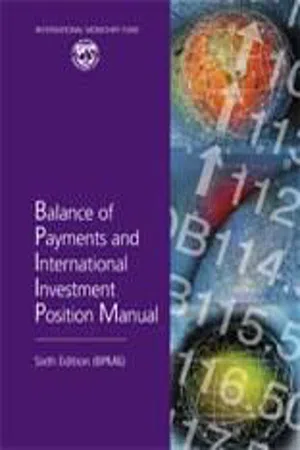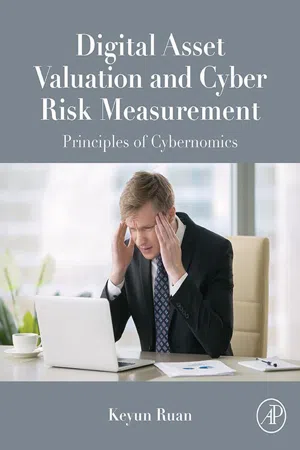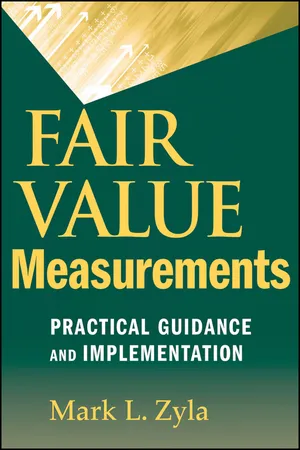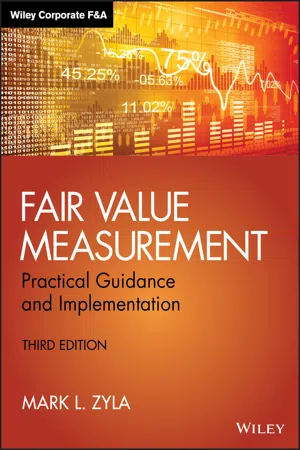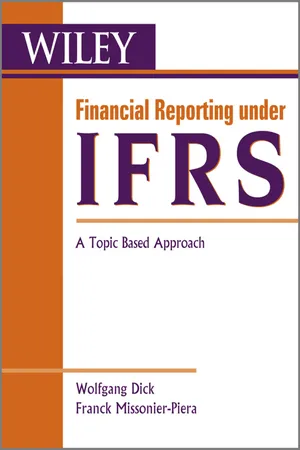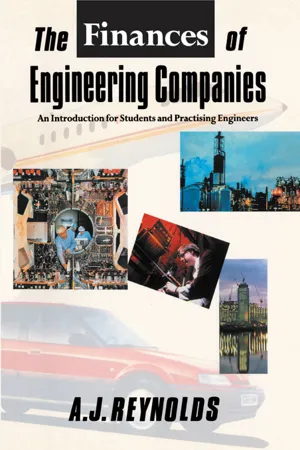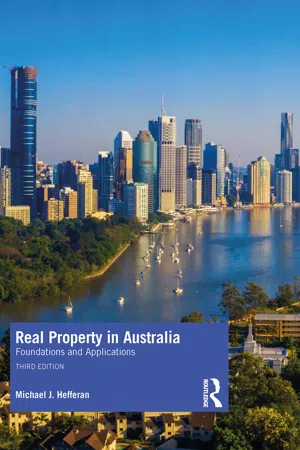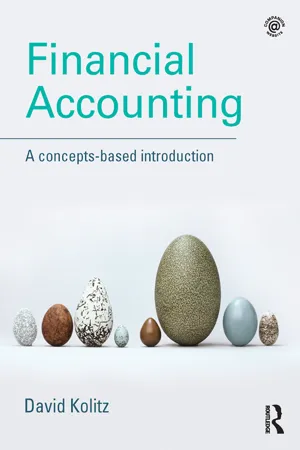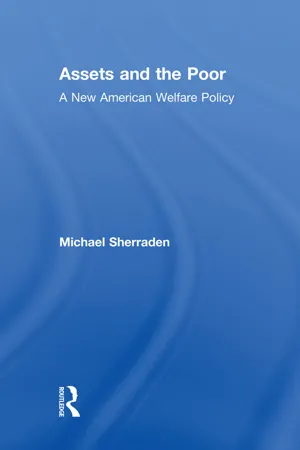Economics
What are Assets
Assets are resources with economic value that can be owned or controlled to produce future benefits. They can be tangible, such as physical property and equipment, or intangible, such as patents and trademarks. In economics, assets are essential for businesses and individuals to generate income and build wealth.
Written by Perlego with AI-assistance
Related key terms
Related key terms
1 of 4
Related key terms
1 of 3
10 Key excerpts on "What are Assets"
- eBook - ePub
- International Monetary Fund(Author)
- 2010(Publication Date)
- INTERNATIONAL MONETARY FUND(Publisher)
The economic owner of the asset is the party who has the risks and rewards of ownership . Rewards of ownership usually include the right to use, rent out, or otherwise generate income, or to sell the asset. The risks include the potential losses caused by damage, theft, and holding losses; that management, transfer, or maintenance costs are greater than anticipated; and, in the case of financial assets, default of the counterparty. Ownership may be subject to costs such as maintenance and taxes. Usually, the economic owner is the same as the legal owner, but they may differ in cases such as financial leases. Under some legal arrangements, elements of the risks and rewards are split between different parties, so it is necessary to identify which party has the bulk of risks and rewards to identify the economic ownership. Every economic asset has demonstrable value, functioning as a store of value that reflects the amounts of the economic benefits that its owner can derive by holding it, using it, or providing it temporarily to another entity. It may be tangible or intangible. Different kinds of economic benefits that may be derived from an asset include:- (a) the ability to use assets, such as buildings or machinery, in production;
- (b) the generation of services, for example, renting out produced assets to another entity;
- (c) the generation of property income (e.g., interest and dividends received by the owners of financial assets); and
- (d) the potential to sell and thus realize holding gains.
5.4 The classification system of economic assets recognized in macroeconomic data sets is shown in Table 5.1 . In the international accounts, produced assets are covered in the goods and services account, nonproduced nonfinancial assets in the capital account, and financial assets and liabilities in the financial account and IIP. This chapter deals with the classification of financial assets and liabilities.Table 5.1 . Economic Asset Classification(Includes 2008 SNA codes)2. Financial instruments
5.5 Financial instruments consist of the full range of financial contracts made between institutional units . Financial instruments may give rise to financial claims (as discussed in paragraph 5.6) or not (as discussed in paragraphs 5.10–5.13).3. Claims
- eBook - ePub
Accounting 101
From Calculating Revenues and Profits to Determining Assets and Liabilities, an Essential Guide to Accounting Basics
- Michele Cagan(Author)
- 2017(Publication Date)
- Adams Media(Publisher)
So while you know now that assets are a crucial component of the accounting equation, here we’re going to take a deeper dive into the world of assets, and their accounting impact. Equally (and maybe even more) important, we’ll talk about how specific assets can be used to grow net worth.On the business side of things, assets are those things that your company owns, from the computer on your desk to the file cabinet in the backroom to the delivery van in the driveway. It works the same way for your personal assets. The money in your checking account, your clothes, your 60-inch flat screen TV , and the fork you just used at dinner all count as assets. It does not matter whether your assets are big or small. All that matters is that you or your company owns them, and that they have monetary value. For that matter, assets don’t even have to be physical things. Patents and copyrights, for example, count as assets even though you can’t touch them. Also, anything you or your company has a legal right to get, such as a tax refund or a future payment from a customer, is accounted for as an asset.Assets seem deceptively easy to understand, but the category comes with some unexpected twists—there’s a lot more to learn here, as you’ll find out a little later. Right now, we’ll take a more general look at why assets are so important in both your personal life and in business, and how they factor into your total financial picture.EVERY BUSINESS HAS ASSETS
No matter how small your business is, no matter what industry your company is part of, your company has assets. From a computer used to prepare customer invoices to a 20,000-square-foot processing plant, every single thing your company owns is an asset, as long as you can assign a dollar value to it.Some assets are physical, such as chairs, copy machines, and delivery vans. Others are legally binding promises, such as accounts receivable, which is the money owed to your company by its customers. Still others seem to exist more on paper, though they may also have tangible form, such as the company checking account or prepaid expenses (for example, a year’s worth of insurance paid in advance). Regardless of the form it takes, anything with monetary value that your company owns or owns the rights to (such as the right to collect money from customers who owe it) counts as an asset. - eBook - ePub
Digital Asset Valuation and Cyber Risk Measurement
Principles of Cybernomics
- Keyun Ruan(Author)
- 2019(Publication Date)
- Academic Press(Publisher)
An asset has service potential or future economic benefits . Something is only an asset from an accounting viewpoint if it is expected to provide future services or economic benefits. The benefits may arise from either the use or sale of the asset.- 2. An asset is controlled by the organization . Control in this sense means the capability of the organization to benefit from the asset and to deny or regulate the access of others to that benefit.
- 3. An asset is the result of past transactions . This means that control over the asset has already been obtained as a result of past transactions, such as purchases, internal development, or discovery.
Under the context of businesses, for example, assets are recorded on companies’ balance sheets based on the concept of historical cost (also called “book value”). Historical cost represents the original cost of the asset, adjusted for any improvements or aging. Assets are bought or created to increase the value of a company or to benefit the company’s operations, such as generate cash flow, reduce expenses, and improve sales, regardless of whether it’s a company’s manufacturing equipment or a patent on a particular technology.An asset represents a present economic resource of a company to which it has a right or other type of access that other individuals or companies do not have. A right or other access is legally enforceable, which means that a company can use the economic resource at its discretion, and its use can be precluded or limited by the owners. For an asset to be present, a company must possess a right to it as of the date of the financial statement.The management of an asset throughout its lifecycle includes planning and support for the investment decision, acquisition, access, and ongoing maintenance through to replacement or retirement planning. The objective of asset lifecycle management is to optimize asset acquisition, maximize the use of the asset, and reduce associated service and operational costs resulting in increased asset performance and a lower total cost of ownership. - eBook - ePub
Fair Value Measurements
Practical Guidance and Implementation
- Mark L. Zyla(Author)
- 2009(Publication Date)
- Wiley(Publisher)
CHAPTER 3The Nature of Intangible AssetsOne interesting aspect of fair value measurement in financial reporting is the increased recognition that intangible assets contribute value to an entity. Every entity, large and small, is made up of both tangible and intangible assets that work in conjunction to create value for the entity. Tangible assets are easily understood. They are assets with physical characteristics that we can typically see; inventory, machinery, and real estate are tangible assets that usually comprise a significant portion of the business enterprise. However, intangible assets are also a major component of a business enterprise. Intangible assets are unique because they generally cannot be observed or touched. Intangible assets typically lack physical substance, but they provide their owner with valuable rights and privileges. Estimating the fair value of these intangible properties creates challenges for those engaged in financial reporting.The International Glossary of Business Valuation Terms defines intangible assets as “nonphysical assets such as franchises, trademarks, patents, copyrights, goodwill, equities, mineral rights, securities, and contracts (as distinguished from physical assets) that grant rights and privileges and have value for the owner.”1 The Dictionary of Finance and Investment Terms has a similar view of intangible assets, defining them as a “right or nonphysical resource that is presumed to represent an advantage to the firm’s position in the market place. Such assets include copyrights, patents, trademarks, goodwill, computer programs, capitalized advertising costs, organization costs, licenses, leases, franchises, exploration permits, and import and export permits.”2 The accounting perspective provided by the Financial Accounting Standards Board (FASB) refers to intangible assets as “assets (not including financial assets) that lack physical substance.”3 - eBook - ePub
Fair Value Measurement
Practical Guidance and Implementation
- Mark L. Zyla(Author)
- 2019(Publication Date)
- Wiley(Publisher)
Such assets include copyrights, patents, trademarks, goodwill, computer programs, capitalized advertising costs, organization costs, licenses, leases, franchises, exploration permits, and import and export permits.” 2 The accounting definition provided by the Financial Accounting Standards Board (FASB) refers to intangible assets as “assets (not including financial assets) that lack physical substance.” 3 The FASB's definition of intangible assets excludes goodwill while the definition used by traditional corporate finance and valuation professionals includes goodwill in the broader definition of intangible assets. HISTORY OF INTANGIBLE ASSETS Intangible assets represent the intellectual capital of an entity. As such, intangibles represent knowledge. Human history is predicated on development of knowledge. Intangible assets are not new phenomena; they have existed throughout human history. Changes in communications technology from the invention of the printing press in the fifteenth century and the telegraph in the nineteenth century, to the telephone, television, and the Internet in the twentieth century, provide an example of how changes in technology impact mankind's advancement. The development of new technologies and legal protections such as patents and copyrights afforded those new technologies creates significant value for the intangible assets' owners. As discussed previously, both the U.S. and global economies have undergone a tremendous shift, from “bricks and mortar” businesses to information‐based businesses that require less investment in tangible assets such as machinery and buildings. Additionally, the globalization of international trade and the development of new information‐based technologies in the past 20 years have contributed to recent recognition that intangible assets add value to an entity - eBook - ePub
Financial Reporting under IFRS
A Topic Based Approach
- Wolfgang Dick, Franck Missonier-Piera(Authors)
- 2011(Publication Date)
- Wiley(Publisher)
5NON-CURRENT ASSETSThis chapter discusses the treatment of assets that will generate economic benefits for the entity for a period beyond the duration of a single operating cycle and are called “non-current assets”. It is mainly this duration criteria that distinguishes them from current assets such as inventory and receivables covered in Chapter 3.Non-current assets can be analyzed according to various criteria. The nature of assets is usually the first criterion used in both the balance sheet presentation and in accounting standards. Thus we can distinguish:• Intangible assets, which are assets without physical substance and non-monetary (software, development expenditures, trademarks, licenses, etc.). • Tangible assets, which are physical assets (land, buildings, machinery, furniture, computer equipment, etc.). • Non-current financial assets, which are monetary values (shares in other companies, long-term loans, etc.).The period during which the company can expect to obtain economic benefits from the use of the asset is the second criterion of classification of non-current assets. We distinguish:• Assets with limited useful life (software, machines, buildings, etc.). • Assets with unlimited useful life (land). • Assets with undefined useful life (trademarks).This chapter mainly follows the classification by nature and presents, first, the intangible and tangible assets and, second, the financial assets (see Figure 5.1 ). The criterion of useful life is addressed in each of the two sections.5.1 TANGIBLE AND INTANGIBLE ASSETS
Tangible assets are physical assets: land, buildings, machinery, furniture. . .Intangible assets are assets without physical substance and are non-monetary: software, development expenditures, trademarks, license. . . - eBook - ePub
- Alan Reynolds(Author)
- 2013(Publication Date)
- Routledge(Publisher)
Despite the name, these are not always screwed down. Rather, they are assets that are expected to be of continuing use to the business and are not readily convertible into cash. Three categories are distinguished:Intangible Assets Tangible Assets Investments They will be considered in turn.Intangible Assets. This heading does not appear in the accounts issued by most companies. Intangible assets are those without a physical identity, such as patents, copyrights, trade marks, brand names and licences. This list omits some important stores of value within a business: the knowledge and skills of its employees, its product designs and varied methodologies, and established relationships with other companies. Nor does the list mention the value that may be assigned to obtaining effective control over a business. Example 4.5 suggests some of the benefits, in particular, access to the whole of the profits and cash generated by a subsidiary company.Intangible assets are usually omitted from the balance sheet because their inclusion is thought to conflict with the fundamental accounting concept of Objectivity. On the other hand, it can be argued that the financial position of the company may be grossly misrepresented unless some attempt is made to assess the value of these intangibles. Indeed, it can be argued that their omission from the balance sheet conflicts with the accounting principle that a company should be viewed as a Going Concern. The treatment of intangible assets is a highly contentious issue within the accounting profession.When a subsidiary is acquired, the purchase price is often much higher than the net value of its identifiable assets. The premium acknowledges the various intangible elements identified above. It is given the name Goodwill; ironically, such transfers of ownership often generate much bad feeling. Section 5.6 indicates a number of ways in which this quantity can be entered into the accounts of an acquiring company.Tangible Assets - eBook - ePub
Real Property in Australia
Foundations and Applications
- Michael J. Hefferan(Author)
- 2020(Publication Date)
- Routledge(Publisher)
Chapter 5Real property as an asset
5.1 Introduction
In Chapter 2 , a number of key characteristics of real property and its markets were identified. Some related to the physical asset and its environment, others to its function, utility and economic and operational performance. It is clear that to fully understand the nature and impact of real property resources, all of these tangible and intangible components and, how they integrate, must be appreciated.With that as a premise, this chapter considers real property as an economic asset and how it is used and managed to optimum effect.5.2 Background
Even though property (‘the built environment’) is so familiar to all, it is difficult to consider it in a dispassionate way – the way in which, for example, a computer scientist may work through algorithms or a pathologist might work through samples looking for themes, issues, problems or links. With property, analysis is often clouded by personal tastes and preferences, emotions, social conditioning and professional background.An objective analysis of property is difficult and not often addressed in a structured way. It is not that real property is unimportant or unworthy of this attention. In fact, the reverse is true. Buildings contain lives, businesses and economic activity, civilisations and cultures. As noted in Chapter 1 , about 44 per cent of all wealth is stored in real property assets (Fiorilla et al. 2012) and global real estate has an estimated aggregated value of $217 trillion (Stein 2019). The development, building and construction industries that create property assets were valued at $10.8 trillion worldwide in 2017 (GlobalData 2018).Real property is the basis of collateral and underwrites most major financial arrangements. Property assets are traditionally a source of wealth, power, prestige and enjoyment. They are the subject of statutory control, disputes and even wars. In recent times particularly, they have also been viewed as vulnerable political and economic targets in international disputes (Pawley 1998). - eBook - ePub
Financial Accounting
A Concepts-Based Introduction
- David Kolitz(Author)
- 2016(Publication Date)
- Routledge(Publisher)
expenses.2.5.1 The statement of financial position and the elements: assets, liabilities and equityThe elements directly related to the measurement of the financial position in the statement of financial position are assets, liabilities and equity. These elements are all defined in the IASB’s Conceptual Framework.Assets
An asset is:• a resource controlled by the entity• as a result of past events• from which future economic benefits are expected to flow to the entity.For a resource to be controlled by the entity, physical form and right of ownership are not essential. Many assets, for example property or equipment, have a physical form and are associated with the right of ownership. However, intangibles such as patents and copyrights may have no physical form other than a certificate of registration. They are, however, assets if they are controlled by the entity and future economic benefits are expected to flow from them. Equipment held on a lease is not legally owned by the lessee, but the substance of the agreement may give the lessee control over the benefits which are expected to flow from the equipment.Financial assets, such as accounts receivable, are also a resource controlled by the entity. In the case of accounts receivable, when the entity has sold goods or provided a service to customers on credit, the resource controlled is the right to collect cash from the customers.In addition to tangible assets, intangible assets and financial assets, there are other assets, for example rent paid in advance, which also represents a resource controlled by the entity, namely the right to occupy the property.Pause and reflect…
a) A business entity sells goods on credit or on account to its customers. Selling on credit means that the customer agrees to pay the business entity for the goods at a later date. These customers are known as accounts receivable or debtors - eBook - ePub
Assets and the Poor
New American Welfare Policy
- Michael Sherraden(Author)
- 2016(Publication Date)
- Routledge(Publisher)
Assets alter the reception of information. To put it plainly, when assets are present, people begin to think in terms of assets. For example, if a young mother owns her own home, she begins to pay more attention to real estate values, property taxes, the cost of maintenance, and so forth. If she has a certificate of deposit, she is more likely to pay attention to interest rates and what makes interest rates go up and down. If she owns twenty-five shares of IBM stock, she is more likely to pay attention to news about IBM, the computer business in general, the stock market, and alternative investment options. Note that it is the assets themselves that create this effect (as opposed to educational programs or exhortations toward better values). Assets create a cognitive reality, a schema, because assets are concrete and consequential. All this can be said very simply: Assets matter and people know it, and therefore, when they have assets, they pay attention to them. If they do not have assets, they do not pay attention. Assets are, by nature, long term. They financially connect the present with the future. Indeed, in a sense, assets are the future. They are hope in concrete form. Eugene Lang offered the Harlem sixth graders a future asset—college tuition—and they responded literally as if they had been given a future. Thinking about management and use of assets automatically results in long-term thinking and planning. If people are to believe in a viable future, there must be some tangible link between now and then. In very many situations, assets are that link. Assets Promote Development of Human Capital and Other Assets Owning financial assets, for most people, is an educational process. People pay attention to the investment, manage it, make some successful decisions, make some mistakes, seek out information, and throughout this process, gain a greater financial knowledge and sophistication
Index pages curate the most relevant extracts from our library of academic textbooks. They’ve been created using an in-house natural language model (NLM), each adding context and meaning to key research topics.
Explore more topic indexes
Explore more topic indexes
1 of 6
Explore more topic indexes
1 of 4
